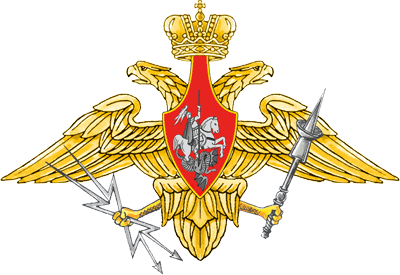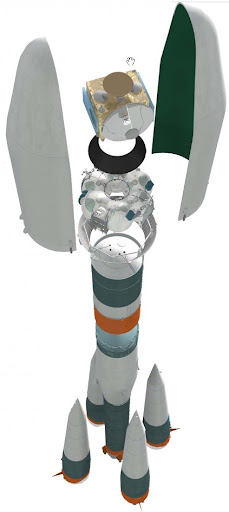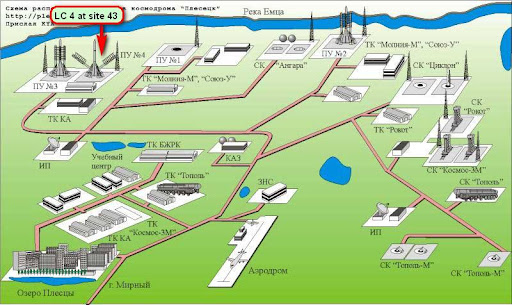- Joined
- Feb 13, 2008
- Messages
- 5,398
- Reaction score
- 8
- Points
- 0
- Location
- Khimki
- Website
- tigerofsiberia.livejournal.com


Launch site: Plesetsk 43/4 (62°55'44.06"N, 40°27'24.71"E)
Launch date: November 2, 2010
The launch time is:
03:58:39 Mocsow DST 02.11.2010
00:58:39 UTC November 2nd, 2010
8:58:39 p.m. EDT November 1st, 2010
Payload: Meridian military communications satellite
Spacecraft: Meridian (14F112)

The launch has already happened, and it was okay. Does anybody want me to supply more info?
Okay, here we go:
Manufacturer: JSC "Information Satellite Systems Reshetnev Company"

Meridian series satellites serve as a part of the United System of Satellite Communications 2nd generation (USSC-2) used by various governmental agencies of Russia, including the armed forces. Placed in a Molniya orbit, it provides high latitude transponder coverage, while Raduga class satellites residing in the GEO, provide global coverage. Meridian is viewed upon as a replacement for the older Molniya-3 spacecraft class.
It is believed to have a pressurized hull part and overall design similar to Uragan-M class satellites that are currently employed as the mainstay of the GLONASS navigation system. Unlike Molniya series that only worked in the solar-facing attitude, the Meridian has full 3-axis stabilisation and rotating solar arrays.
Meridian satellites reside in Molniya orbits (900 km x 39000 km; 65°)
Spacecraft type history
In the middle of 2006, the Russian government released a transcript of the Security Council meeting in Kremlin, which quoted Russian Ministry of Defense Sergei Ivanov as saying that flight tests of the new Meridian spacecraft were scheduled for no later than the 4th quarter of 2006, with the goal of upgrading the telecommunications segment of the military command and control system. (Transcript Moscow, Kremlin, June 20, 2006.)
According to unofficial postings on the web, the Meridian satellite is equipped with a pressurized service module and a three-axis attitude control system. Some of the systems, including onboard flight control computer and propulsion might be similar to those developed for the Uragan-M navigation satellite. The spacecraft also sports solar panels capable of rotating themselves toward the sun, along a single axis.
Both, Uragan and Meridian satellites were developed at NPO PM in Zheleznogorsk, where the latter project apparently originated back in 1978. NPO PM developed absolute majority of Russian spacecraft for telecommunications and navigation, both military and civilian.
As with Uragan satellites, the production of operational Meridian satellites was apparently subcontracted to PO Polyot in the city of Omsk. During several aerospace exhibitions in Russia circa 2001, the organization released a photo of a satellite, which was advertised as “new” Molniya, which is a communications satellite, operating in the highly elliptical orbit. At the time, sources at PO Polyot told reporter with the Kommersant newspaper Ivan Safronov (R.I.P.) that the spacecraft had already been built but had little chance of getting off the ground due to lack of funds.
Meridian-1, not given a Cosmos designation, launched on December 24, 2006. Two and half years later, during the coverage of the second Meridian launch, the head of NPO PM (then remaned ISS Reshetnev) Nikolai Testoedov told Russian media that the first Meridian satellite failed before the end of its projected lifespan. He blamed a collision with space junk for the premature demise of the spacecraft.
Meridian-2, also not designated a "Cosmos-####", launched on May 21, 2009 (see our thread).
According to the official Russian sources, the launch vehicle successfully delivered the satellite into orbit at 04:13 Moscow Time. The spacecraft established contact with the ground and its systems worked well, the Russian space forces reported. However, western radar found the Meridian and its Fregat upper stage in the 275 by 36,473 and 191 by 36,377-kilometer orbits. Independent observers noticed that these parameters, especially perigee, were considerably lower than those of the original Meridian satellite, inserted into a 1,009 by 39,818-kilometer orbit. Also, the perigee of the spacecraft was within a range of altitudes, where the friction of the upper atmosphere could quickly degrade the satellite's orbit, unless maneuvers to raise it were taken urgently.
A respectable source on the Novosti Kosmonavtiki forum reported that preliminary data indicated the shutdown of the third stage of the launch vehicle three seconds earlier than planned. The Fregat upper stage apparently made an attempt to compensate the underperformance of the third stage with its own extended burn, until it run out of propellant.
As it transpired in the first half of June 2009, the investigation commission traced the problem to an erroneous input of data about the payload into the flight program, as a result of poor interaction between the customer and the developer. It led to overuse of propellant during the first and second burns of the Fregat upper stage (not the third stage of the Molniya rocket as was originally reported.) At the end of the second burn of the Fregat engine, it was shut down prematurely based on the propellant level data. Fortunately, the third (aborted) engine burn was expected to be very short, consuming the amount of propellant just enough to ignite the main engine. The problem during the insertion triggered the separation of the upper stage and its payload, as it was designed in case of emergency.
Thus far, all Meridian missions never saw a full success.
Meridian-4 launch is expected to happen in 2011 (same launcher, same launch facility).
Launcher: Soyuz-2-1A with Fregat upper stage

Manufacturer: Samara Space Centre

Number of stages|3
Liftoff mass|312 tonnes
Maximum length|46.3 m
Nose Fairing diameter|2.7 m; 3.0 m; 3.3 m; 3.715 m; 4.11 m
It can deliver up to 6830 kg of payload into 220*220 km circular orbit with inclination of 62.8° when launched from Plesetsk.
The upper stage: Fregat (meaning Frigate)

Manufacturer: NPO Lavochkin

Flight qualified in 2000, the Fregat upper stage is an autonomous and flexible upper stage that is designed to operate as an orbital vehicle. It extends the capability of the lower three stages of the Soyuz vehicle to provide access to a full range of orbits (LEO, SSO, MEO, GTO, GEO and escape). In order to provide the Fregat with high initial reliability, several flight-proven subsystems and components from previous spacecraft and rockets are incorporated into the upper stage. The upper stage consists of 6 spherical tanks (4 for propellants, 2 for avionics) arrayed in a circle, with trusses passing through the tanks to provide structural support. The stage is independent from the lower three stages, having its own guidance, navigation, control, tracking, and telemetry systems. The stage uses storable propellants (UDMH/NTO) and can be restarted up to 20 times in flight, thus enabling it to carry out complex mission profiles. It can provide the customer with 3-axis stabilization or spin-up of their spacecraft.
The dry mass of a Fregat (as of October 2006) is 924 kg; with fuel the mass is up to 5350 kg. Current modification of the main engine has a specific impulse of 332 s and a thrust of 2018 kg. The reaction control system includes 12 engines, each having 5 kg thrust, 225 s Isp, using pure hydrazine, with mass up to 42 kg.
The vehicle's reliability statistics according to http://www.spacelaunchreport.com/reliability2010.txt:
Code:
================================================================
Vehicle Successes/Tries Realzd Pred Consc. Last Dates
Rate Rate* Succes Fail
================================================================
Soyuz 2-1a/Fregat 4 5# .80 .71 2 5/21/09 2006-
# Does not include one successful suborbital Soyuz 2-1a test
flight performed in 2004.Launch Complex
Launch Complex 43/4 (62°55'44.06"N, 40°27'24.71"E)

Launch Profile
After a 9 min long boosting stage, the payload assembly is put into 62.8° inclined initial orbit with mean altitude of 210 km. After a 15 min long coasting, a second Fregat's 613 seconds long burn puts the payload into a transfer orbit. After reaching the apogee, the orbit's shape is finalized.
Launch video
The only one by Zvezda channel with Russian narration is available:
http://tvzvezda.ru/news/russia/content/raketa-nositel_43soyuz-259_startovala_s_0211.html
Source References
http://forum.nasaspaceflight.com
http://www.novosti-kosmonavtiki.ru
http://space.skyrocket.de
http://www.spacelaunchreport.com
http://www.russianspaceweb.com
http://npopm.ru
http://www.samspace.ru
http://www.laspace.ru
Last edited:
